SMA vs BNC vs N-Type: Which RF Connector Should You Use?
July 29,2025
Introduction
In RF systems, choosing the right connector isn’t just about making a snug fit—it’s about preserving signal integrity and ensuring your system works without hidden headaches. Whether you’re designing a high-frequency board or testing communication hardware, a poorly matched connector can quietly degrade performance.
Among the many RF connector types, the SMA, BNC, and N-Type connectors often take center stage. Each one differs in locking method, size, frequency range, and where it performs best. Understanding these differences is the key to getting clean signals, easier installations, and fewer surprises down the road.
So, which RF connector should you go with—SMA, BNC, or N-Type? Let’s compare them side by side and find the right match for your application.
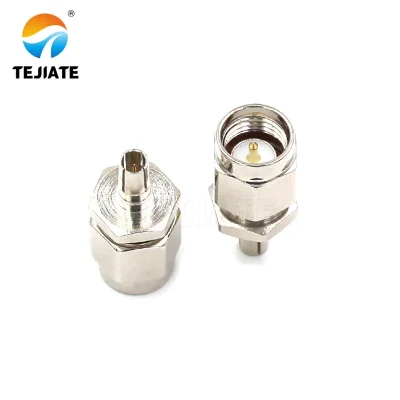
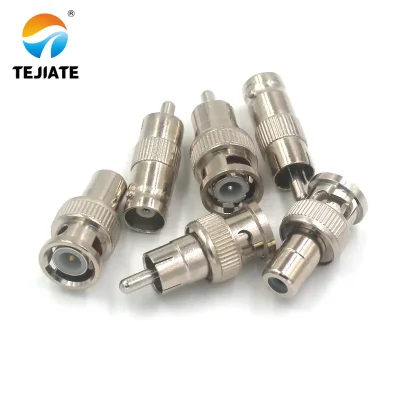
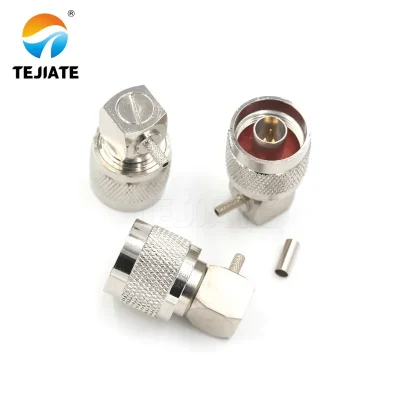
Quick Comparison Table
Need a quick side-by-side view?
Here’s how SMA, BNC, and N-Type RF connectors compare in the real world:
| Feature | SMA Connector | BNC Connector | N-Type Connector |
|---|---|---|---|
| Coupling Mechanism | Threaded twist-on for secure high-frequency connections | Bayonet-style—push and twist for fast connect/disconnect | Heavy-duty threaded, ideal for outdoor or high-power setups |
| Frequency Range | Up to 18 GHz, some go to 26.5 GHz (lab-grade) | Usually under 4 GHz, best below 1 GHz | Standard to 11 GHz, some up to 18 GHz |
| Impedance | Fixed 50 Ω, optimized for microwave | Available in 50 Ω or 75 Ω, mostly 50 Ω in RF gear | 50 Ω (75 Ω exists for certain systems) |
| Size | Compact, fits tight boards or antenna ports | Mid-size, easier to grip, good for test tools | Large, handles big loads and tough environments |
| Strengths | Great at high frequencies, holds steady under vibration | Fast to connect, beginner-friendly, cost-effective | Tough and weatherproof, made for the outdoors |
| Best Use Cases | Small RF modules, Wi-Fi, cellular gear | Lab scopes, RF testers, CCTV feeds | Base stations, telecom towers, military-grade setups |
SMA Connector Overview
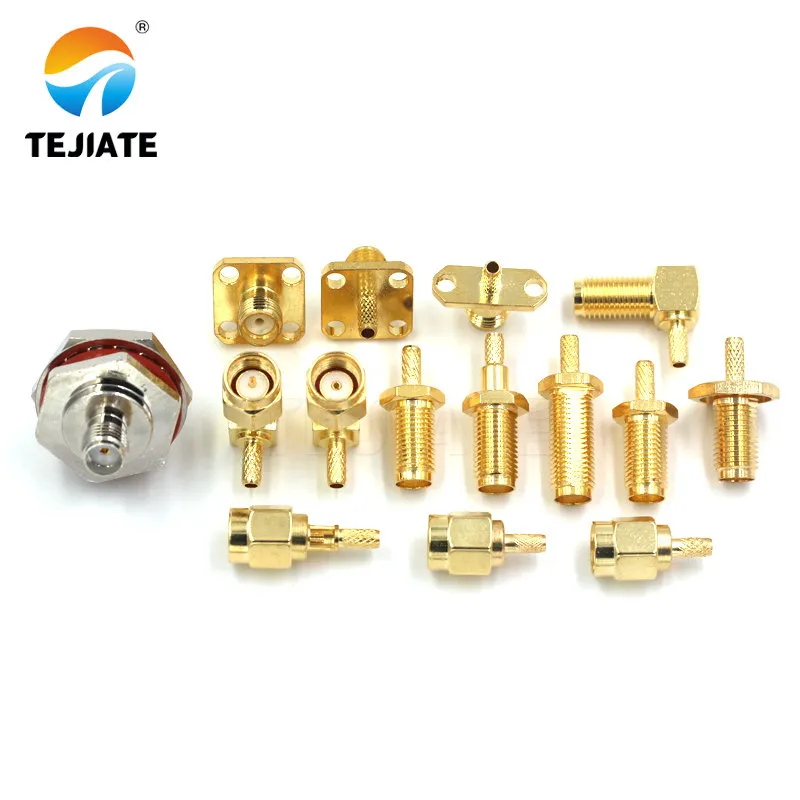
This adapter enables seamless connection between SMA and RP-SMA interfaces, often used in Wi-Fi routers, test benches, and antenna systems requiring reverse polarity conversion.
SMA Connector: Small but Mighty in RF Systems
- SMA (SubMiniature A) connectors are built for high-frequency jobs where space is limited.
- With their threaded screw-on design, they form a solid connection that won’t budge—even under vibration.
- Most standard versions handle signals up to 18 GHz, but precision SMA models can reach ~26.5 GHz.
- These connectors are tuned to 50 Ω impedance, making them perfect for wireless, GPS, and lab-grade RF gear.
Use case hint: You’ll often spot SMA on compact antennas, signal modules, or test benches.
Pros of SMA Connectors
- Handles microwave frequencies — great for high-speed, high-frequency signals.
- Ultra-compact — fits on dense circuit boards and small devices.
- Threaded connection holds tight — no signal drop from loose coupling.
- Highly compatible — tons of adapters available (SMA to BNC, SMA to N, etc.)
Cons to Watch Out For
- Not for high power — it’s small, so it heats up fast under strong RF loads.
- Needs careful screwing — threads can get damaged without proper torque.
- Takes longer to plug — not quick-connect like BNC.
- Not weatherproof by default — unless sealed or weatherproofed, it won’t survive outdoors.
Audio Connectors
Whether you’re listening or recording, audio connectors are everywhere.
Use 3.5 mm plugs for phones, RCA jacks for home stereo, and XLR for clean mic signals.
BNC Connector Overview
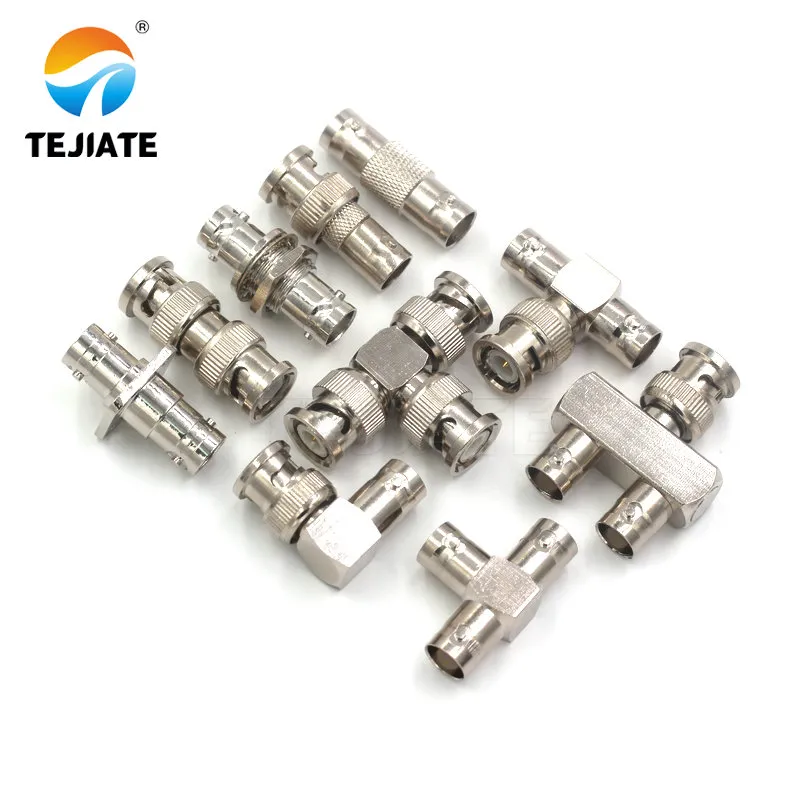
This BNC connector variant features shielding for enhanced signal integrity, making it ideal for lab measurements, legacy CCTV systems, and low-frequency coaxial networks.
BNC Connector: Quick Twist, Wide Use
- BNC (Bayonet Neill–Concelman) connectors are famous for their fast connect/disconnect design.
- Just push and twist, and you’re locked in—no wrench needed, no fumbling.
- It’s this ease that makes BNC a lab favorite and a go-to in broadcast setups.
- Typically, BNC connectors work well up to 4 GHz, though most users stay under 1 GHz for stability.
- They come in 50 Ω (for RF) and 75 Ω (for video/data) versions, so versatility is no issue.
Why Choose BNC?
- Tool-free & quick — connect/disconnect in 1 second.
- Budget-friendly — low cost and widely available in test labs, CCTV, telecom gear.
- Supports two impedances — use 50 Ω for RF, 75 Ω for analog video, Ethernet-over-coax.
- Tolerates daily use — survives many plug cycles without losing performance.
Where BNC Falls Short?
- Not great at high GHz — loses signal above 2–4 GHz; SMA is better for high-frequency needs.
- May loosen with vibration — bayonet locks aren’t ideal for moving machinery or vehicles.
- Not waterproof — unsuitable for outdoor or humid environments.
- Mid-sized bulk — bigger than SMA, so not ideal for tight PCBs or handhelds.
N-Type Connector Overview
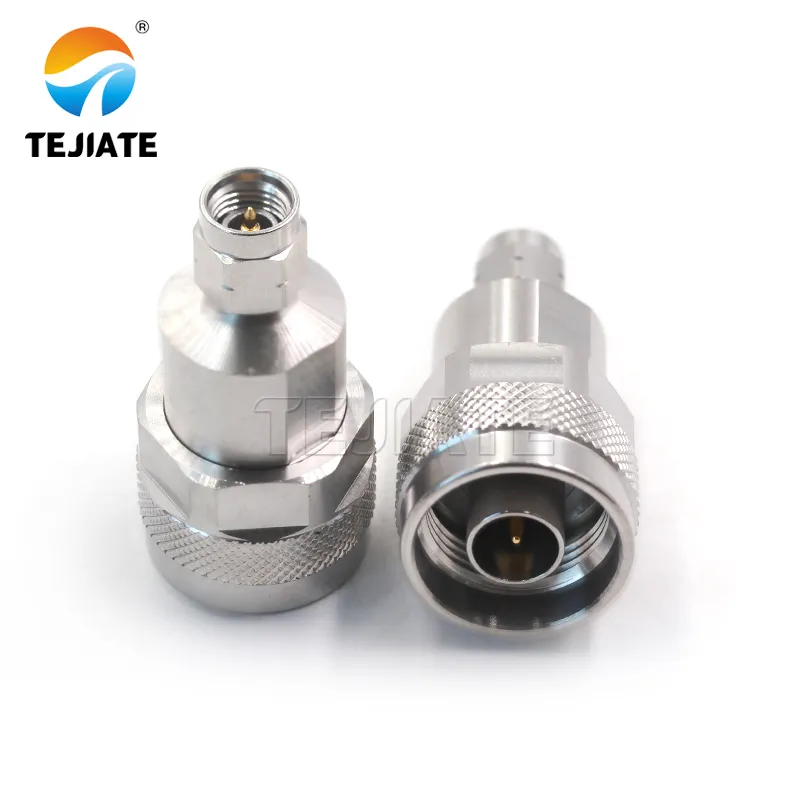
This precision adapter connects N-Type connectors to millimeter-wave ports, enabling efficient frequency extension in test setups and advanced communication systems like 5G and radar.
N-Type Connectors: Built for Power, Made for Outdoors
- N-Type RF connectors are no joke—they’re big, strong, and weather-ready.
- Think of them as oversized SMA connectors, but built like tanks.
- Originally military-grade, they now power base stations, radar systems, and outdoor RF networks.
- Standard versions go up to ~11 GHz, while precision types reach ~18 GHz, all at 50 Ω impedance.
- Best part? They’re tough enough to handle high RF power—hundreds of watts, no sweat.
Use case tip: If it’s outside and carries power—N-Type is likely involved.
N-Type Connector Pros
- Handles high power — thanks to larger conductors and better voltage isolation.
- High-frequency capable — works well up to 10–18 GHz.
- Tough and reliable — won’t deform easily, great for industrial setups.
- Weatherproof designs — many include gaskets for outdoor RF connections.
N-Type Connector Cons
- Bulky and heavy — not for tiny gadgets or compact PCB layouts.
- Takes time to install — big threads = more turns; might need a wrench.
- Costs more — heavier materials and larger size increase price & shipping.
- Overkill for low-power gear — below 1 GHz? A BNC might do the job better.
How to Choose the Right RF Connector
When choosing between RF connector types, forget specs for a moment—context is king. Here’s where each one fits best:
Lab Test Bench
- For under 1 GHz, go with BNC connectors — easy to swap, tool-free, perfect for everyday lab use.
- For microwave work (above 4 GHz)? SMA or N-Type ensure accuracy and signal integrity.
- Summary: Use BNC for low-freq speed, SMA/N-Type for precision high-freq testing.
Outdoor Base Stations
- No contest: N-Type connectors win.
- They’re weatherproof, resist vibration, and handle high power with ease.
- BNC here? Forget it — not waterproof, not strong enough.
- Summary: Choose N-Type when the setup faces rain, wind, and long-term exposure.
Portable Devices
- Think radios, drones, IoT gear — space is tight.
- SMA connectors are compact, light, and still perform great at high frequencies.
- BNC? Too bulky. N-Type? Overkill.
- Summary: SMA hits the sweet spot for small RF gadgets.
High-Vibration Environments
- Vehicles, aircraft, or machines shake a lot — threaded connectors stay in place.
- Use SMA or N-Type for stability; BNCs may loosen over time.
- Bonus: TNC connectors (threaded BNC) are a vibration-resistant middle ground.
- Summary: If it moves, use threads. Always.
TEJTE: Your Trusted RF Connector Partner
Choosing a connector is one thing. Getting it right? That’s where TEJTE comes in.
As an ISO-certified RF manufacturer, we offer SMA, BNC, and N-Type connectors engineered for real-world demands.
Our products meet CE, FCC, and RoHS standards—so whether you’re building for lab, field, or global OEM, you’re covered.
Need something special? We offer custom RF cables, IP-rated waterproof connectors, and high-volume solutions tailored to your specs.
Explore our full range here: TEJTE RF Connector Products
Why Choose TEJTE?
- Over 13 years of RF experience
- Precision-grade materials, stable signal performance
- Full support for adapter solutions — SMA-to-N, BNC-to-SMA, etc.
- Fast consultation: Not sure what fits? Ask us. We’ll help.
FAQ: Frequently Asked Questions About RF Connectors
Q1: What’s the main difference between SMA and BNC connectors?
A: It’s all about size, frequency, and locking style. SMA is threaded, compact, and built for high frequencies (up to 18 GHz). BNC is larger, bayonet-lock, and better suited for quick connect/disconnect below 1 GHz. They’re not directly compatible—but yes, you can use an SMA-to-BNC adapter if needed.
Q2: Should I use N-Type or BNC for my antenna?
A: Almost always: N-Type wins. It’s weatherproof, rugged, and handles high power—ideal for antennas, especially outdoors. BNC connectors are better left indoors on low-power setups. For anything serious, go with N-Type.
Q3: Is BNC good for RF above 4 GHz?
A: Not really. Above ~4 GHz, BNC starts struggling. You’ll see mismatches, higher VSWR, and signal loss. Use SMA or even 2.92 mm for clean high-frequency transmission.
Q4: Can SMA and N-Type connect directly?
A: No—they have different threads and sizes. But don’t worry: a SMA-to-N adapter bridges them safely. Still, if you can, keep connector types consistent.
Q5: What causes signal loss in connectors?
A: Top culprits? Impedance mismatch and poor-quality connectors. Dirt, corrosion, or even loose fittings cause extra loss. For minimal attenuation, use matched, clean, high-quality coaxial connectors—you’ll stay below 0.1 dB loss in most cases.
Q6: Which RF connector is best outdoors?
A: N-Type connectors, hands down. Their O-ring sealing and threaded design make them the go-to for outdoor RF use. They survive wind, water, and time. Want outdoor-grade connectors? Explore our N-Type products
Conclusion: Choosing the Right RF Connector
No single connector does it all. But get this part right, and your system just works—no weak signals, no loose ends.
- SMA connectors shine when you need high frequency in small spaces.
- BNC connectors are all about convenience, especially below 1 GHz.
- N-Type connectors? That’s your go-to for power, weather, and long-term stability.
Not sure which one fits your build? Play it safe—match the connector to the job.
And if you’re still unsure, don’t go it alone. TEJTE has your back with:
- A full lineup of RF connectors and adapters
- Custom cable assembly options
- Expert support to help you pick what works
Ready to get the perfect fit? Reach out—your signal deserves better.
Bonfon Office Building, Longgang District, Shenzhen City, Guangdong Province, China

A China-based OEM/ODM RF communications supplier
- Customized RF Adapter Cable
- Custom RF Connectors
- Custom RF Adapter
- Custom Millimeter Wave Test Adapter
- Custom RF Antennas
- Custom RF Coaxial Cables
- Custom RF Coaxial Power Splitter
- Custom RF Coaxial Load
- Custom Electronic Module
- Custom Connectors
- Custom Push Button Switch
- Custom Capacitors
- More New Products
Table of Contents
Owning your OEM/ODM/Private Label for Electronic Devices andComponents is now easier than ever.
